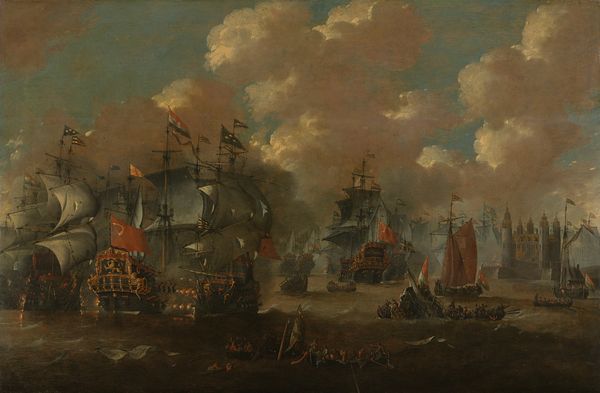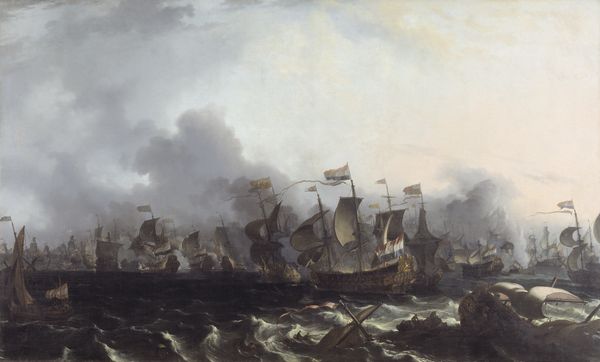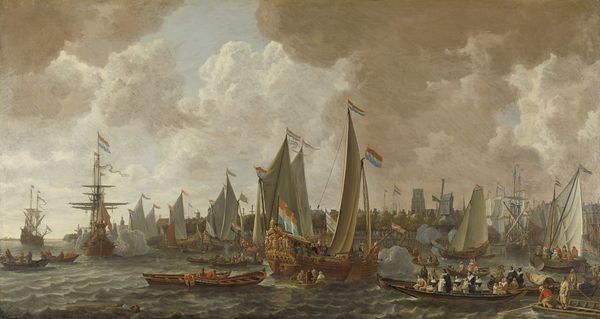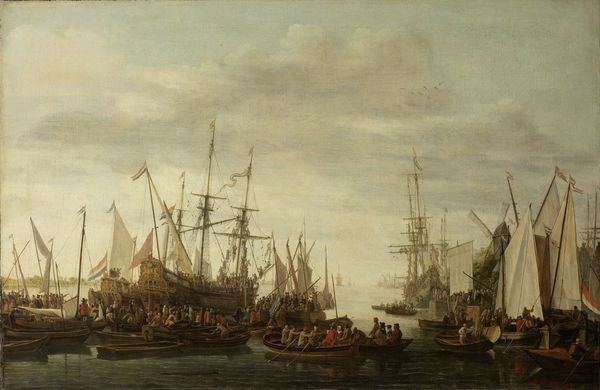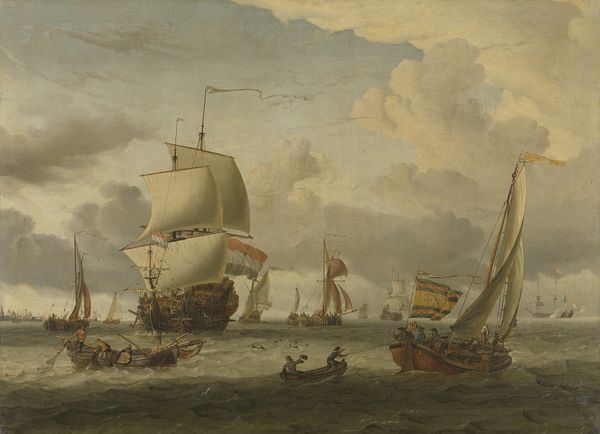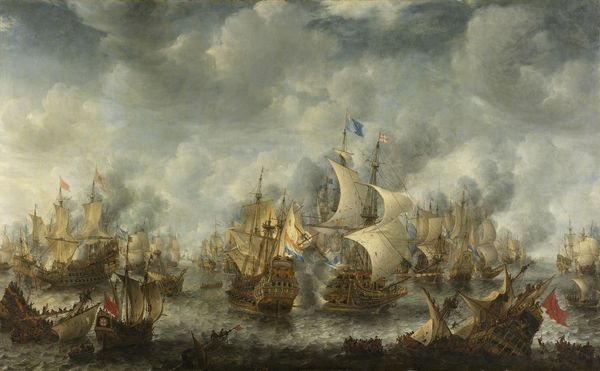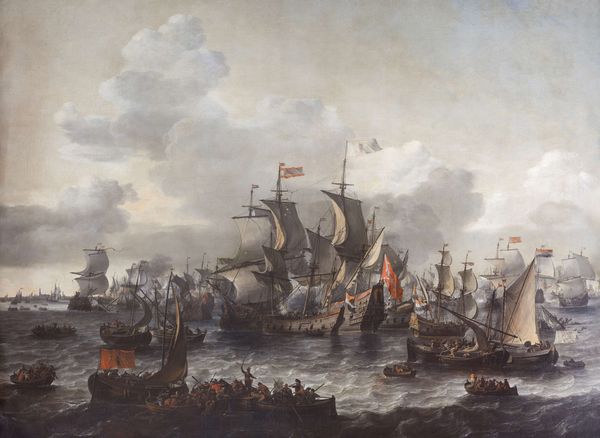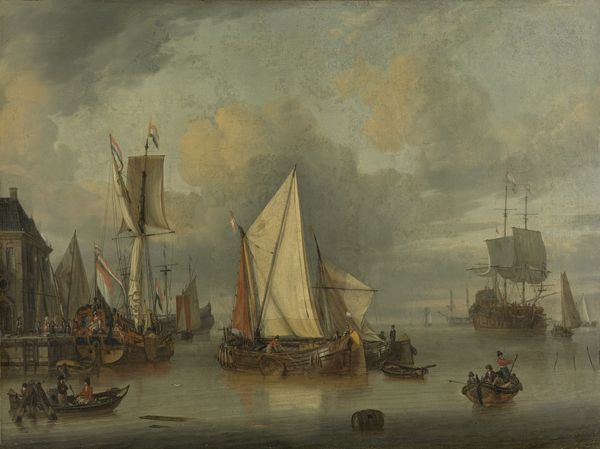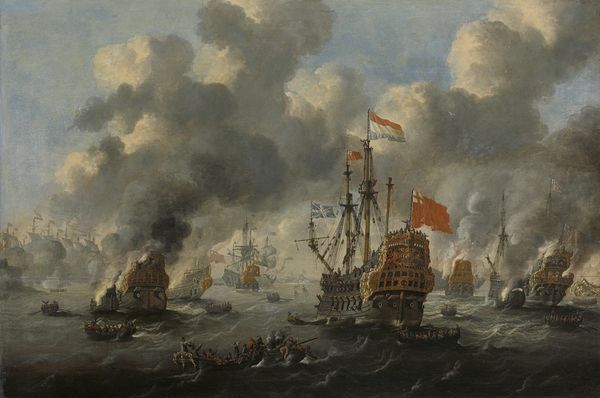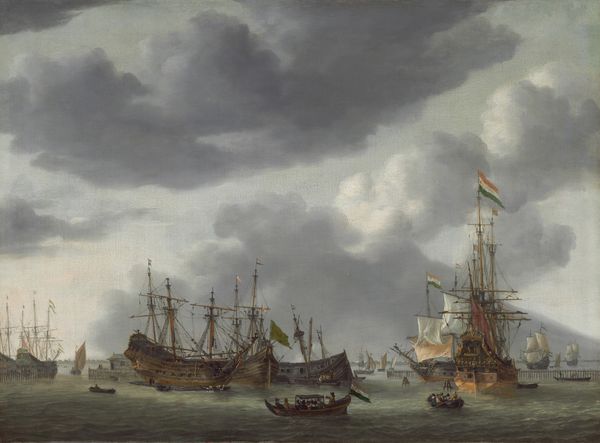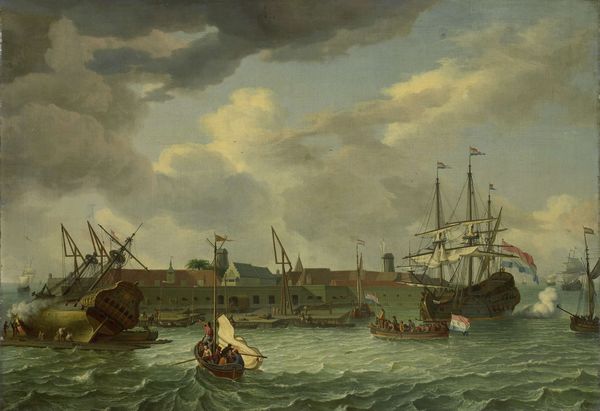
The Defeat of the Spanish at Gibraltar by a Dutch Fleet under the Command of Admiral Jacob van Heemskerck, 25 April 1607 1639
0:00
0:00
adamwillaerts
Rijksmuseum
painting, oil-paint
#
baroque
#
painting
#
oil-paint
#
landscape
#
oil painting
#
underpainting
#
painting painterly
#
genre-painting
#
history-painting
Dimensions: support height 136 cm, support width 204.5 cm, outer size depth 5.5 cm
Copyright: Rijks Museum: Open Domain
Curator: Here we have Adam Willaerts’ 1639 oil on canvas, "The Defeat of the Spanish at Gibraltar by a Dutch Fleet under the Command of Admiral Jacob van Heemskerck, 25 April 1607," currently housed here at the Rijksmuseum. Editor: The immediate impression is one of intense activity. The canvas pulses with movement, from the choppy waves to the billowing smoke and the crowded array of vessels. The subdued palette of greys, blues, and browns enhances the dramatic, almost chaotic scene. Curator: Precisely. Willaerts constructs the composition with meticulous attention to detail, guiding the viewer's eye through the complex layering of ships, figures, and the geographical elements of Gibraltar itself. The diagonal lines formed by the ships lead toward the upper right corner, providing spatial depth, though the somewhat muted atmospheric perspective diminishes absolute clarity. Editor: Indeed, the symbolic weight here feels very pronounced. Naval battles in Dutch art carry significant nationalistic overtones. The defeat of the Spanish, a major political rival, underscores the burgeoning Dutch power on the seas, embodying notions of freedom, trade dominance, and even divine favor. The very act of commemorating this specific victory speaks volumes about its lasting importance. Curator: The materiality adds to this interpretation. Notice the almost palpable textures of the waves rendered in thick impasto, contrasting against the smoother, more refined depiction of the ship hulls. This dichotomy subtly reinforces the power of nature versus the constructed agency of man. The interplay of light and shadow creates depth, emphasizing certain areas, but the painterly application retains its Baroque essence. Editor: Right. Smoke as an interesting visual and cultural symbol; here, obscuring and revealing aspects of battle. In Western iconography, smoke could represent transient destruction but also transformation. Here, does the specific location of Gibraltar add layers to this symbol, given it marked, historically, boundaries and shifts of empires? The painting captures the moment that transformed a nation’s self-perception. Curator: A perceptive assessment, capturing perfectly how the artistic form reinforces and deepens historical and cultural meanings. Editor: It’s fascinating how Willaerts melds artistic skill with potent cultural storytelling, don't you agree?
Comments
No comments
Be the first to comment and join the conversation on the ultimate creative platform.
